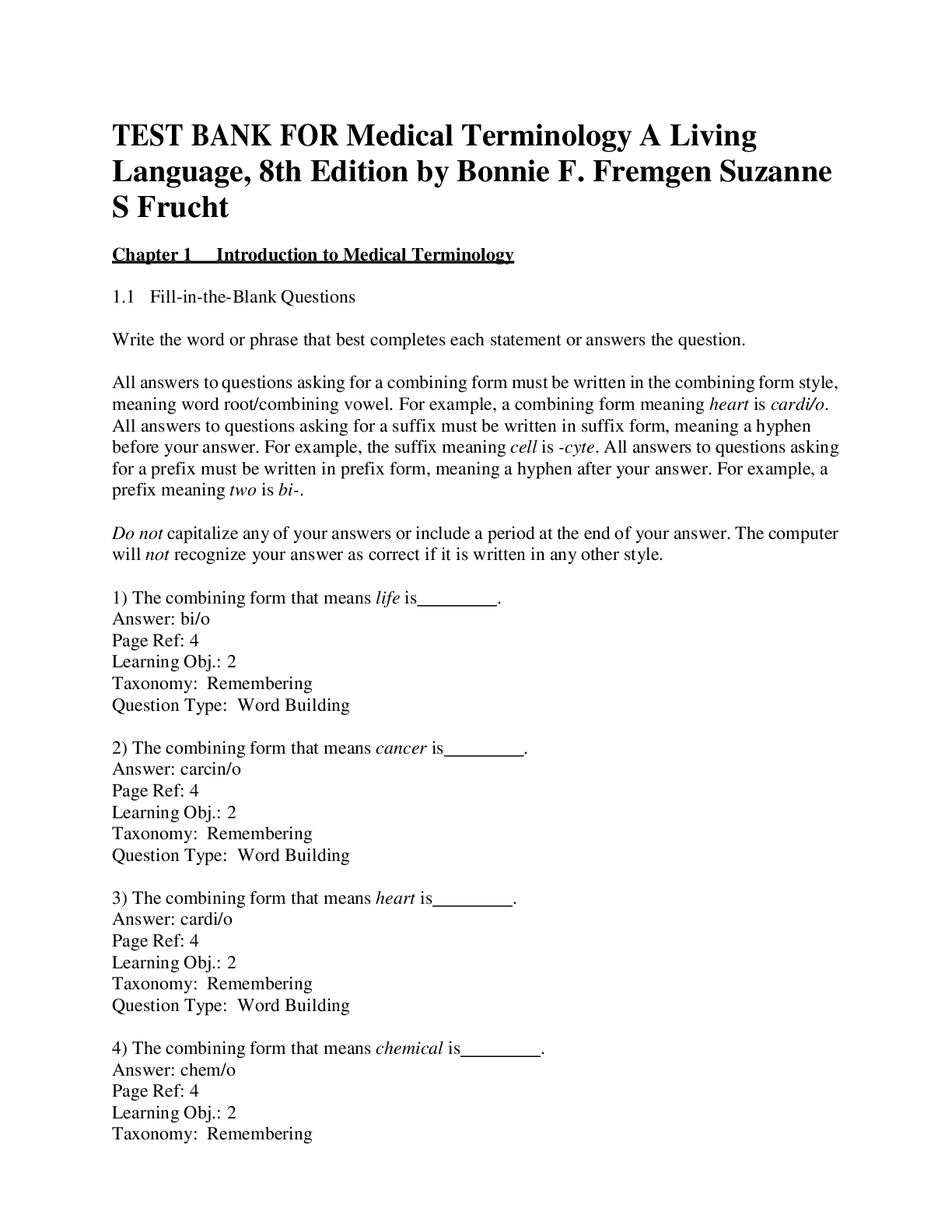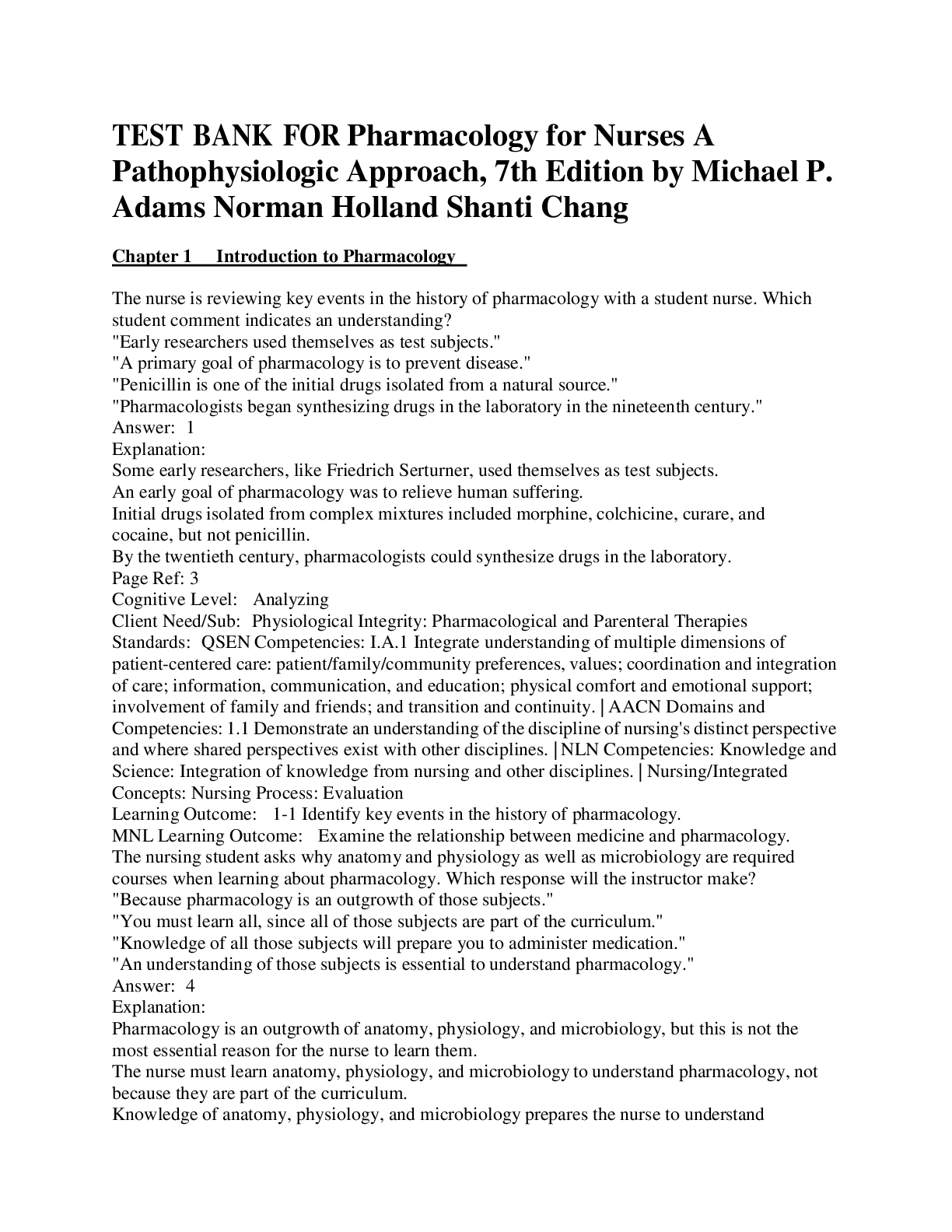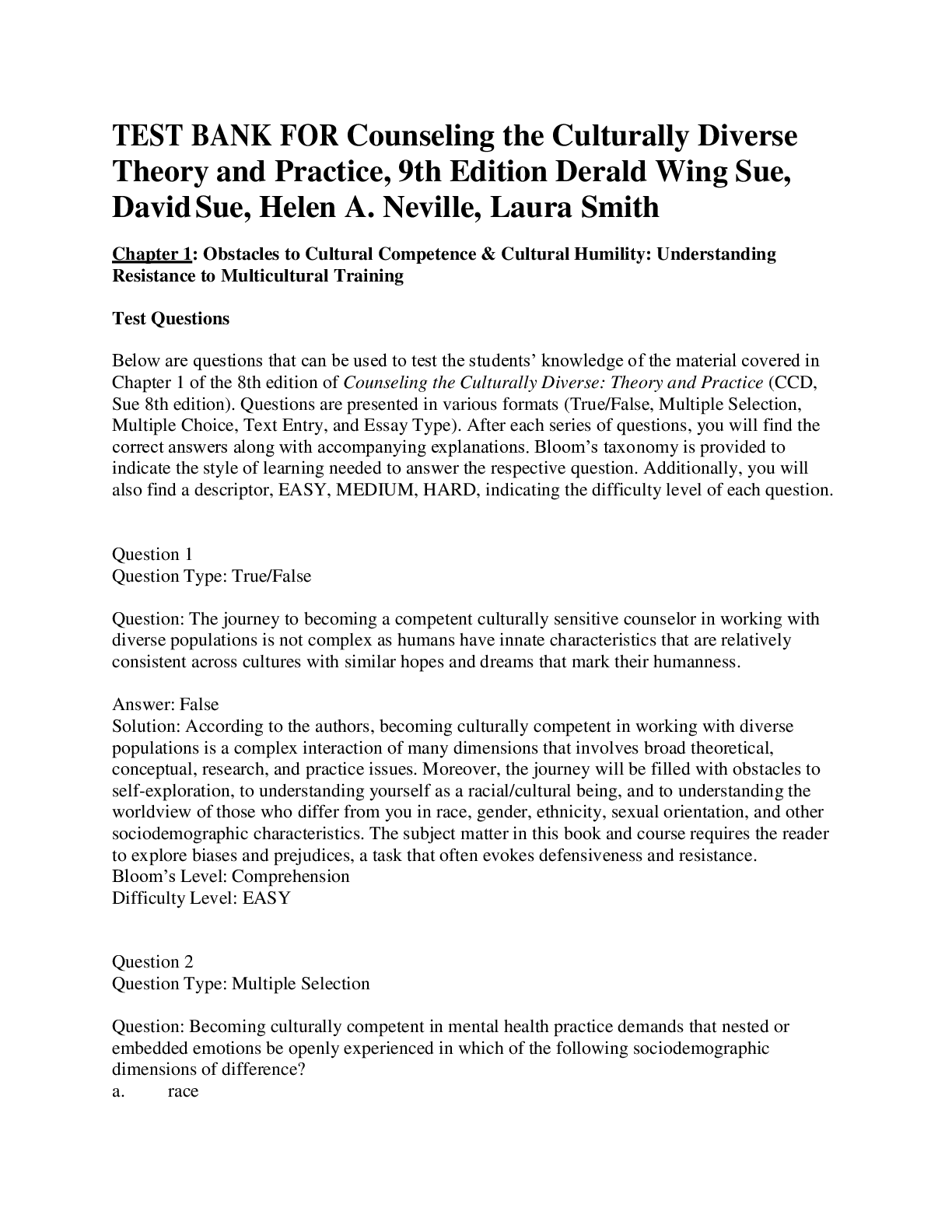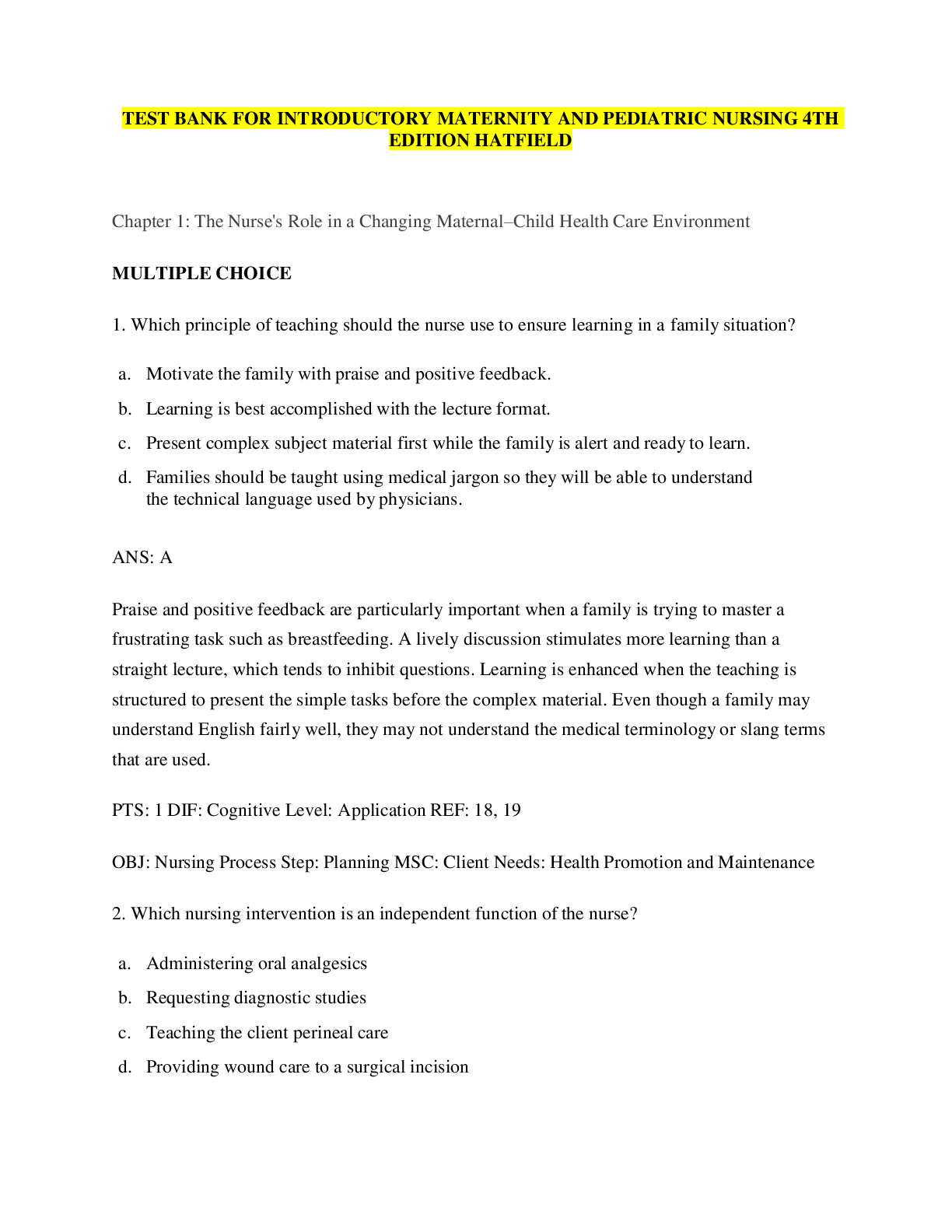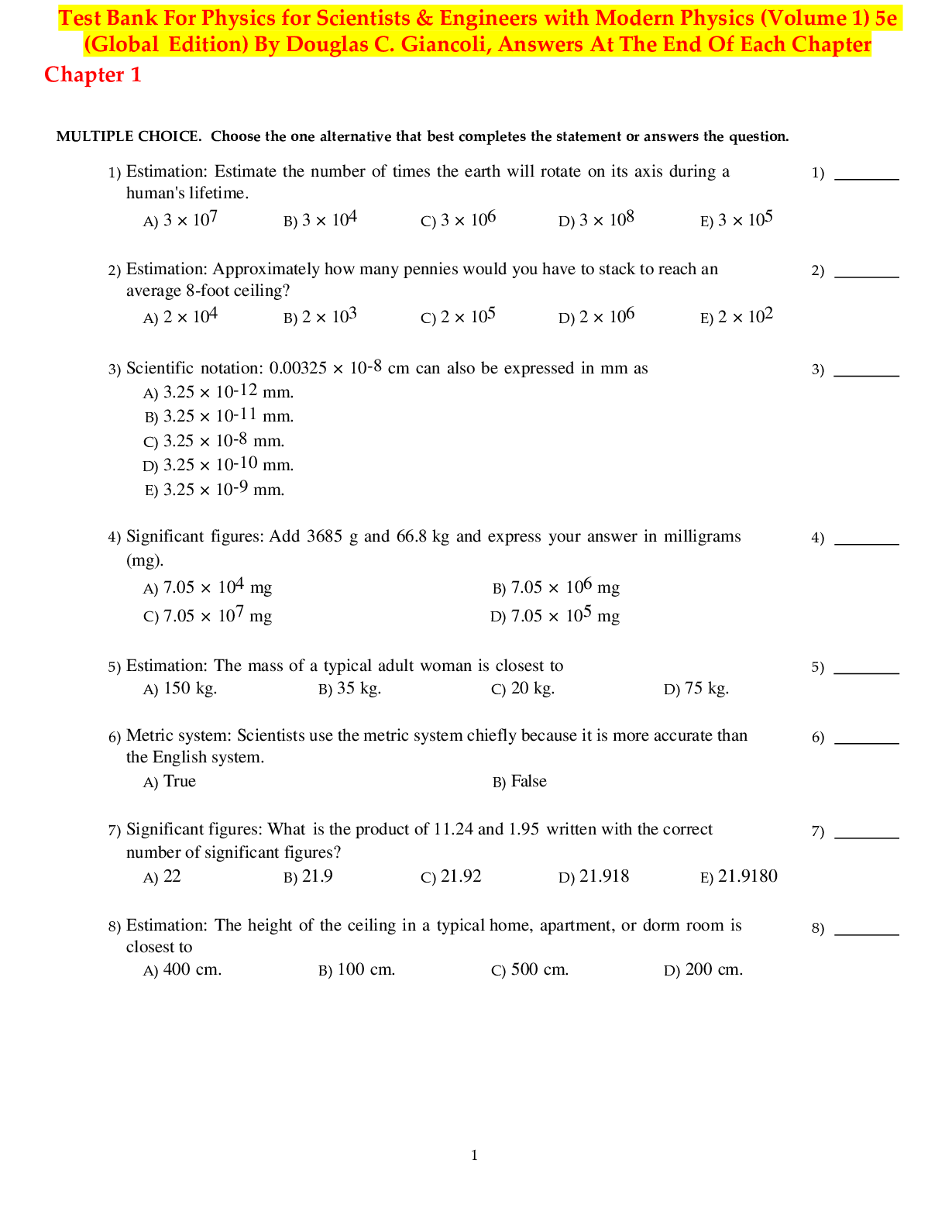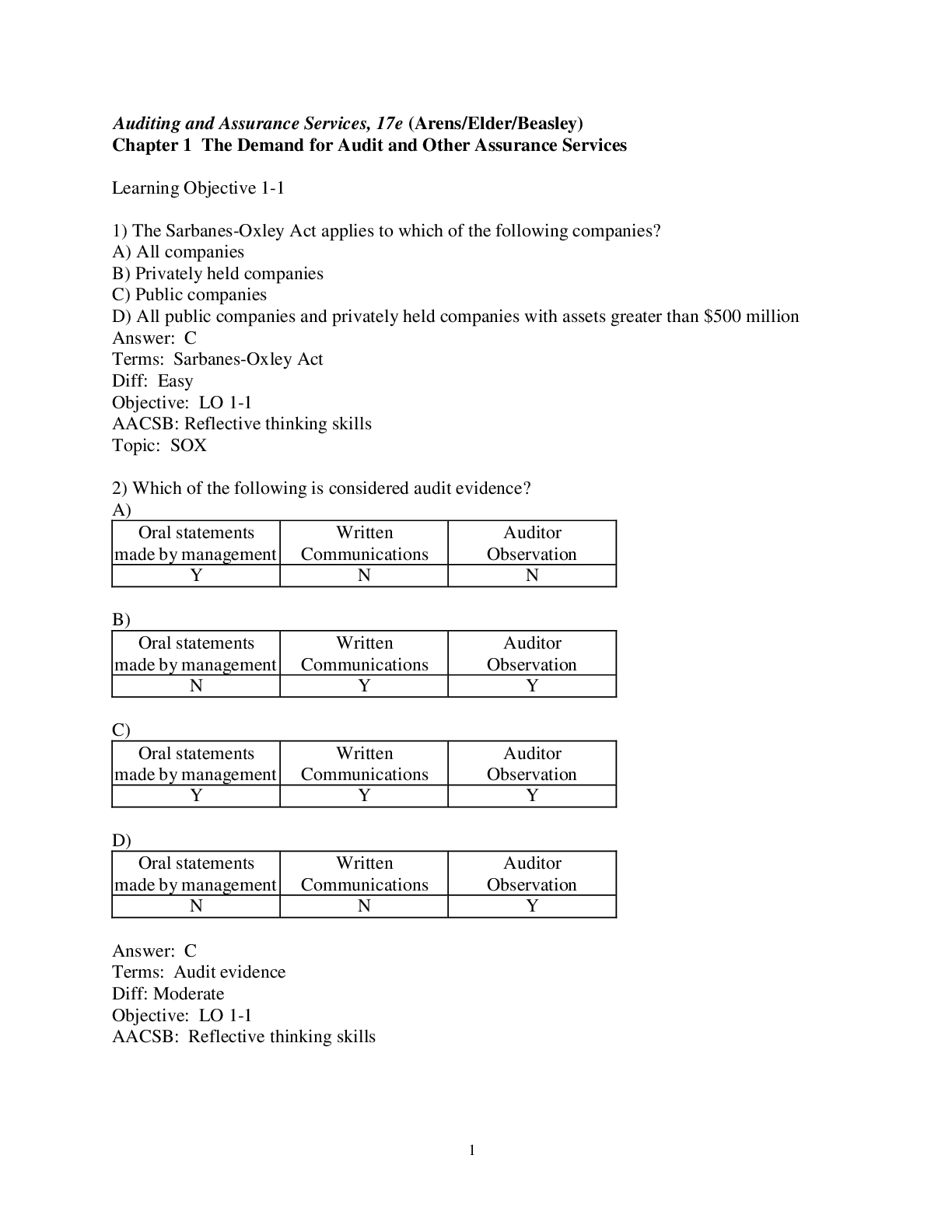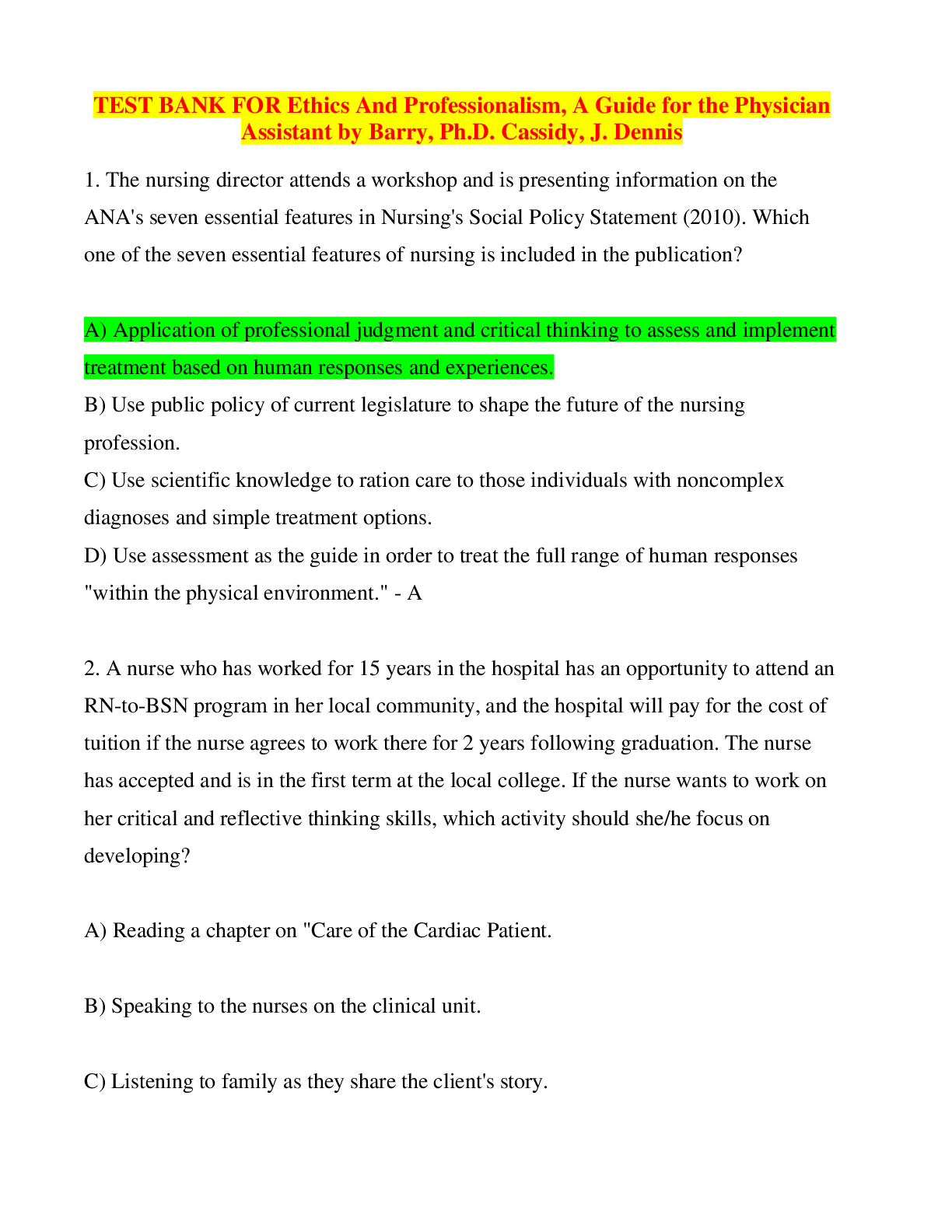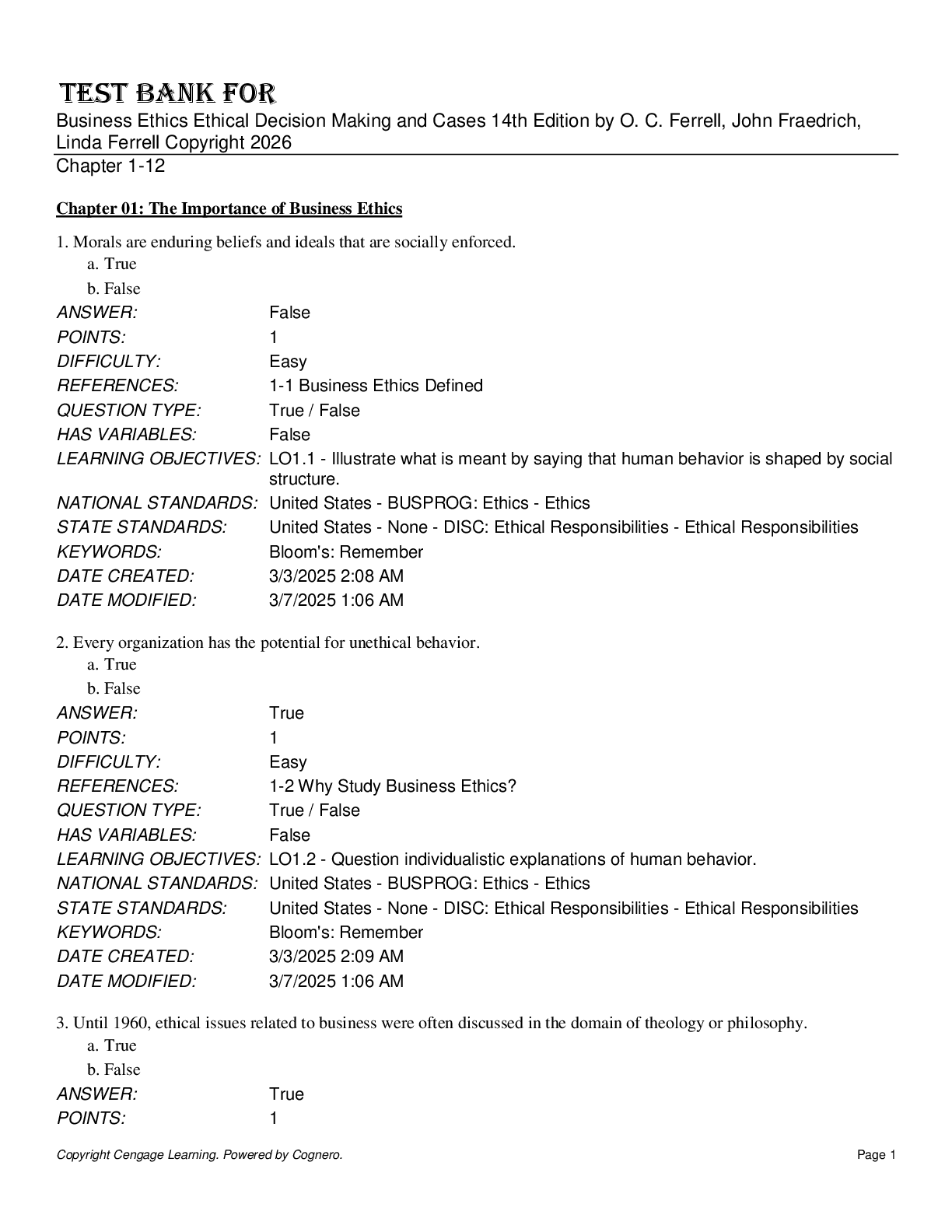*NURSING > TEST BANKS > PCCN EXAM TEST BANK, 400 EXAM QUESTIONS & CORRECT DETAILED ANSWERS, PCCN EXAM PREP TEST BANK, RATED (All)
PCCN EXAM TEST BANK, 400 EXAM QUESTIONS & CORRECT DETAILED ANSWERS, PCCN EXAM PREP TEST BANK, RATED 100%
Document Content and Description Below
PCCN EXAM TEST BANK, 400 EXAM QUESTIONS & CORRECT DETAILED ANSWERS, PCCN EXAM PREP TEST BANK, RATED 100%-The nurse observes that the patient's jugular veins distend in the semi-upright position to mor ... e than 5 cm above the sternal angle. This is an indication of: - fluid volume overload. what is normal Pulmonary artery occlusion pressure (PAOP)? - 5-12 mmHg The resistance against which the left ventricle must pump to eject its volume is: - systemic vascular resistance. When the tricuspid valve is open, central venous pressure reflects the filling pressure in the: - right ventricle. Tachycardia is dangerous for the patient with ischemic heart disease because of: - compromised cardiac output. During initial examination of a critical care patient, the nurse observes wide and convex nails and bulbous fingertips. This is evidence of: - central cyanosis. Priorities for palpation of the patient with cardiovascular disease include: - estimating edema. checking capillary refill checking for DVT arterial pulses By blocking the conversion of angiotensin I to angiotensin II, angiotensin-converting enzyme inhibitors produce: - b. vasodilation. The nurse has read that the cardiologist recommends the use of class IV drugs to depress sinus and atrioventricular node conduction and terminate supraventricular tachycardias in the patient at this time. The nurse will anticipate orders for which medications? - a. Verapamil, diltiazem, or amlodipine The nurse has administered a drug that stimulates β1-adrenergic sites. Following administration of the drug, the nurse will assess for: - a. increased heart rate. The nurse is observing the patient's electrocardiographic monitor after insertion of a temporary pacemaker. Seeing a P-wave after the pacing artifact, the nurse knows that the: - c. atrium is being paced. The possibility of microshock when handling a temporary pacemaker can be minimized by: - b. insulating the ends of the wires. and wearing gloves when handling the pacing wires In the postoperative cardiovascular patient, the most frequent cause of a decreased cardiac output is: - a. reduced preload. A patient is being monitored by continuous electrocardiogram (ECG) after placement of a transvenous pacemaker. "Loss of capture" is seen on the ECG. Which nursing intervention may correct this situation? - a. Position the patient on the left side. or reposition the leads [Show More]
Last updated: 11 months ago
Preview 5 out of 82 pages

Loading document previews ...
Buy this document to get the full access instantly
Instant Download Access after purchase
Buy NowInstant download
We Accept:

Also available in bundle (1)
Click Below to Access Bundle(s)
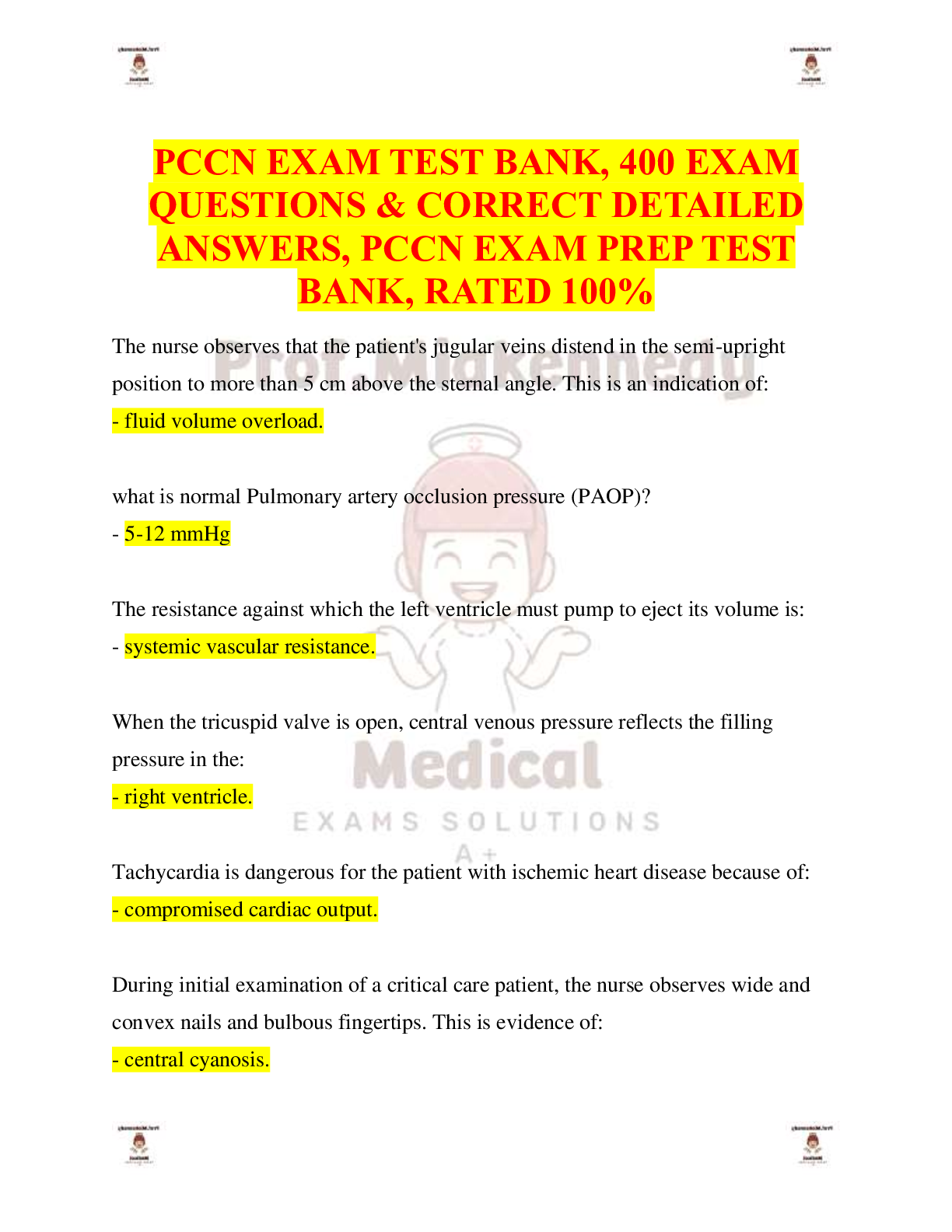
BUNDLE: Progressive Care Certified Nurse (PCCN) Exam TESTBANK, PCCN Actual Exam, Exam Prep, PCCN Exam 1, PCCN Final Exam, Final Exam Review, PCCN Practice Exam Notes 2025 Answered & Adult CCRN/PCCN Certification Practice Test Exam Questions & Answers, ALL RATED 100%
BUNDLE: Progressive Care Certified Nurse (PCCN) Exam TESTBANK, PCCN Actual Exam, Exam Prep, PCCN Exam 1, PCCN Final Exam, Final Exam Review, PCCN Practice Exam Notes 2025 Answered & Adult CCRN/PCCN Ce...
By PROF 11 months ago
$53.5
8
Reviews( 0 )
$16.50
Can't find what you want? Try our AI powered Search
Document information
Connected school, study & course
About the document
Uploaded On
Jan 02, 2025
Number of pages
82
Written in
All
Additional information
This document has been written for:
Uploaded
Jan 02, 2025
Downloads
0
Views
61


